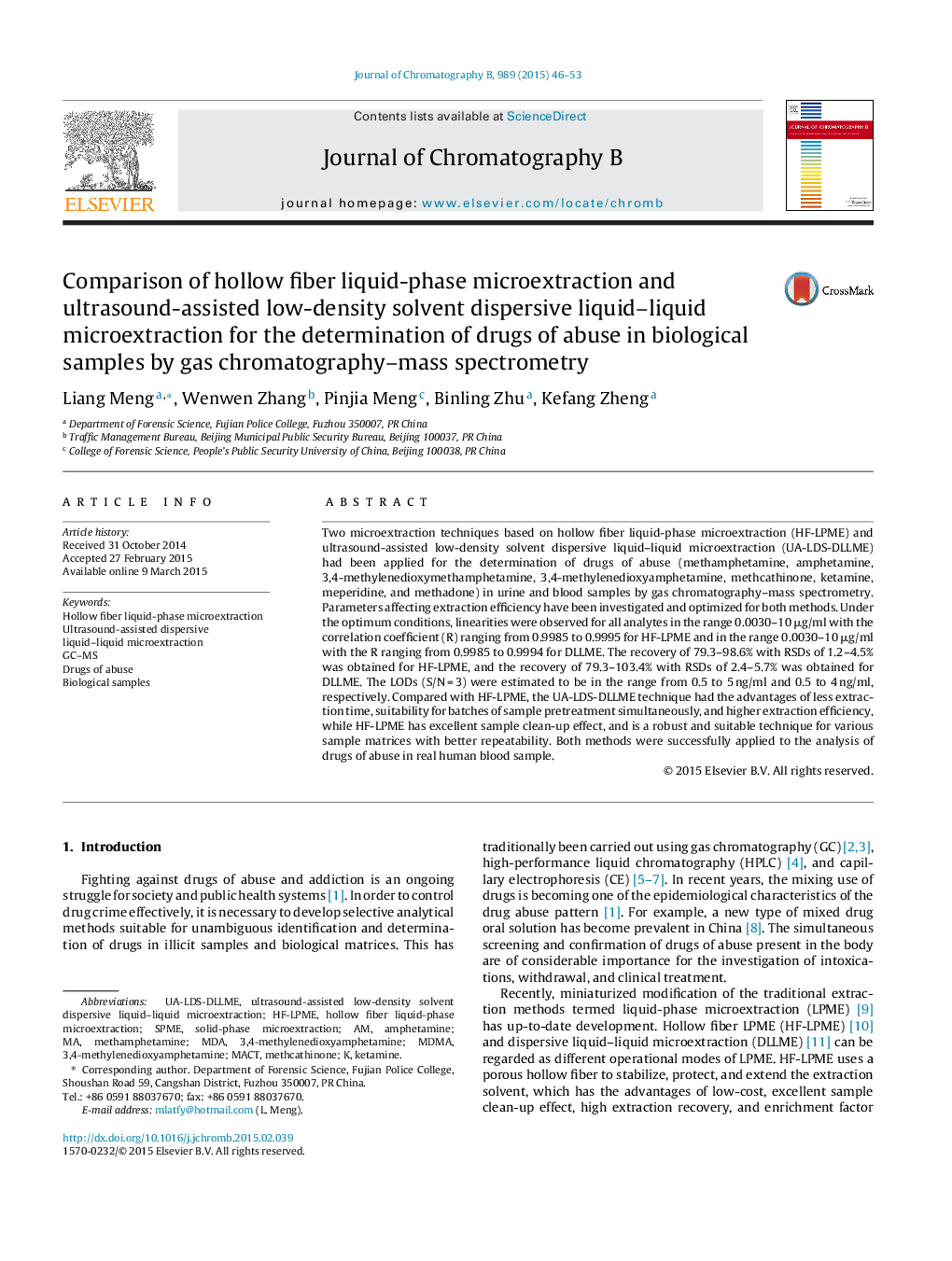| Article ID | Journal | Published Year | Pages | File Type |
|---|---|---|---|---|
| 1212247 | Journal of Chromatography B | 2015 | 8 Pages |
•The simultaneous screening and confirmation of drugs of abuse in the body are of considerable importance.•Ultrasound-assisted low-density solvent dispersive liquid–liquid microextraction is used for the drug analysis in the body.•Hollow fiber liquid-phase microextraction is used for the drug analysis in the body.•Both methods are very simple, rapid, convenient, and microliters solvent consumption techniques.
Two microextraction techniques based on hollow fiber liquid-phase microextraction (HF-LPME) and ultrasound-assisted low-density solvent dispersive liquid–liquid microextraction (UA-LDS-DLLME) had been applied for the determination of drugs of abuse (methamphetamine, amphetamine, 3,4-methylenedioxymethamphetamine, 3,4-methylenedioxyamphetamine, methcathinone, ketamine, meperidine, and methadone) in urine and blood samples by gas chromatography–mass spectrometry. Parameters affecting extraction efficiency have been investigated and optimized for both methods. Under the optimum conditions, linearities were observed for all analytes in the range 0.0030–10 μg/ml with the correlation coefficient (R) ranging from 0.9985 to 0.9995 for HF-LPME and in the range 0.0030–10 μg/ml with the R ranging from 0.9985 to 0.9994 for DLLME. The recovery of 79.3–98.6% with RSDs of 1.2–4.5% was obtained for HF-LPME, and the recovery of 79.3–103.4% with RSDs of 2.4–5.7% was obtained for DLLME. The LODs (S/N = 3) were estimated to be in the range from 0.5 to 5 ng/ml and 0.5 to 4 ng/ml, respectively. Compared with HF-LPME, the UA-LDS-DLLME technique had the advantages of less extraction time, suitability for batches of sample pretreatment simultaneously, and higher extraction efficiency, while HF-LPME has excellent sample clean-up effect, and is a robust and suitable technique for various sample matrices with better repeatability. Both methods were successfully applied to the analysis of drugs of abuse in real human blood sample.
